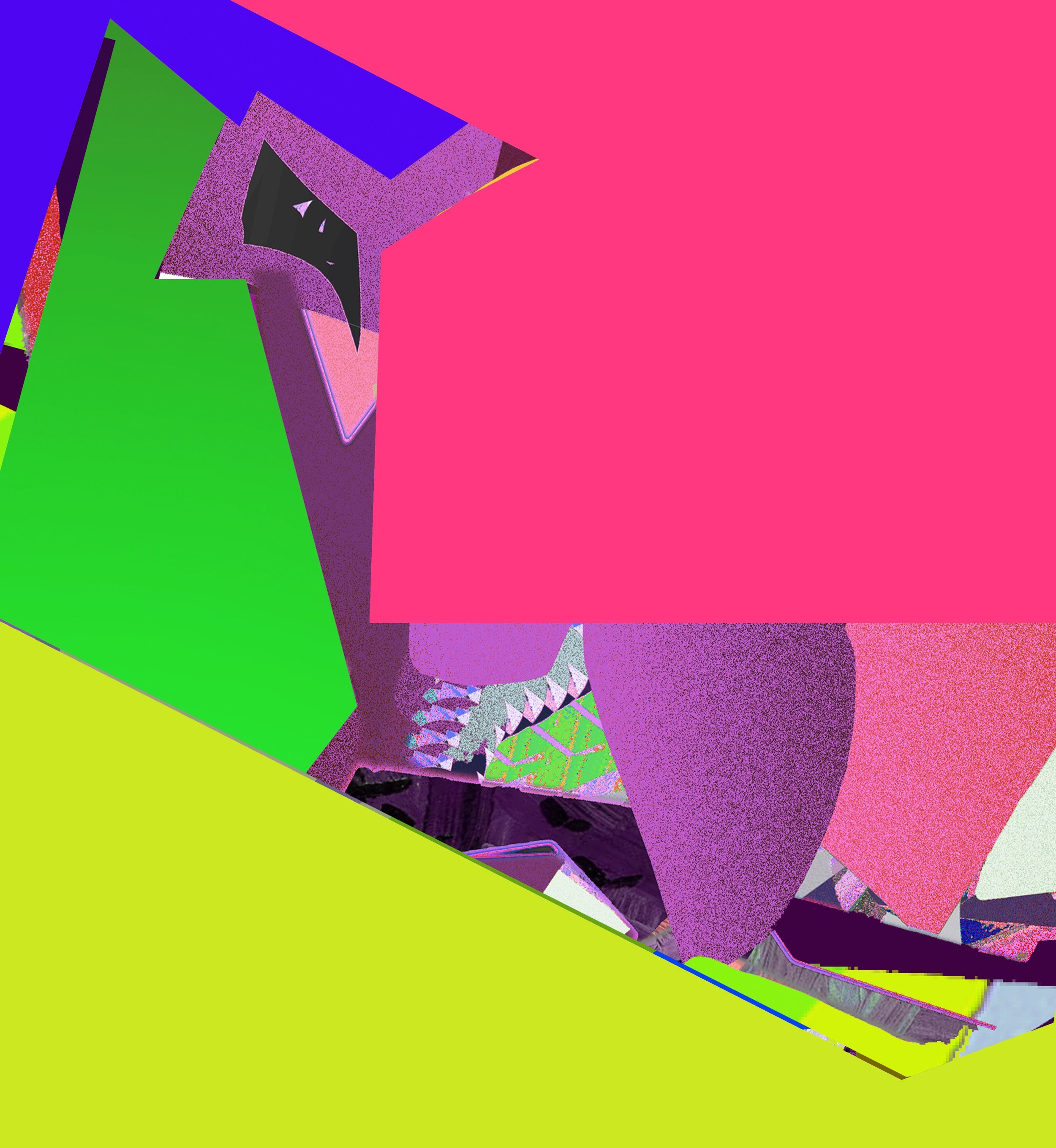One(DotPsd)
One Dot Psd
Digital on Canvas or Framed Print
Learn more about purchase options here.
Designed digitally, painted on software and then carefully reproduced in oils, the collection represents a stream of consciousness; the kind of repetition, disruption and prolific production that has emerged via Photoshop, MS Paint and other, now almost omnipresent, programs. The images are a kind of contemporary pop-art. Warhol’s repetition reimagined for a digital age, moving at one hundred times the pace. This is pop-culture filtered through a kaleidoscope of algorithms and code, reinterpreted as paintings that can infiltrate gallery spaces, art fairs and ‘the white cube’. There is tension everywhere - between the chaos of the digital image and the mindful process of its recreation, between the impermanence of pixels and the permanence of paint. The digital realm continues to bleed in to the ‘real’ world; Karsouny occupies a new, uncharted space, mediating between two worlds on our behalf.
From the log book:
"Digital Drills to Free the Hand and MindMy interest in mindfulness drove me to digital exploration to free myself from the pressures of past and future, instead zooming in on the present, using everything—texture, graphic noise, pixels, metadata, graphic elements—as brush or method of application. The action of painting is a language, a way to communicate, that traditionally centered upon stretched canvas on pieces of wood and throwing paint on it to convey a picture.
First, in order to adopt a timeless state of painting, these works are an interactive dialogue, entitled One Dot Psd, through which the continuous process of digital painting becomes the work, sometimes live streamed for the viewer to see moment by moment. The work is one graphic file (one.psd), that I screen capture while painting. It is an ongoing painting project, and so far contains 200 hours of digital painting. Digital work provides me with an adventurous way of making abstract paintings, and fulfills the possibility of being detail oriented when needed. The process simplifies the act of shifting gears at clicking speed.
Digital painting works out the brain as much as large canvas painting strengthens the body, and keeps it lean for strong and fast strokes, digital or analog.
The digital age painter understands well his role in painting, as he belongs to the turn of the tide: time is speeding up. Analog painting keeps us at a safe distance from a biological home, it is the digital age painter’s safe mode. Physical texture and materiality aside, digital painting expands us. We may have started experimenting with digital methods but the field is minuscule in comparison with the legacy of painting and sculpture.
Building my mark-making starts with exploring texture and material through: scribbling, shading, sketching, rendering with a graphite pencil, to noticing the grain of a cotton sheet crackle as you glide your charcoal stick through it, to painting with goops of acrylic or slipping a butter palette knife oil splat on soft, yet roughly gessoed linen. I then open it up digitally to allow for more variety, through texture with brush making, cloning, 3d brushes, texture scanning, and filter building.
Digital frees your hand differently than on a sketchbook or canvas, where the variables are more to consider such as space, tools, time, physical motion. Improvising digitally provides a broader range of options from 3D sculpting to flat collaging or digital painting, video and sound editing, and animation softwares all on one small device compared to working physically which may slow you down, but helps to master your material and surface and control the imprint you leave with both. When it comes to composition, digital work wins the fight. A graphic software of choice and a professional screen tablet is all you need. You can whip through them one after the other. You can slow it down and speed it up, simplify it, texturize it, change it, invert it , and the possibilities are endless and fast to achieve.
It is this exact process—slowing down to speed up, playing with textures and switching seamlessly from one medium to the next, that is the real goal of the work. The very impermanence of One Dot Psd means that, even if one momentary glimpse of the painting is pleasing to the viewer’s eye, ultimately that is not the point.
So what is?"

















